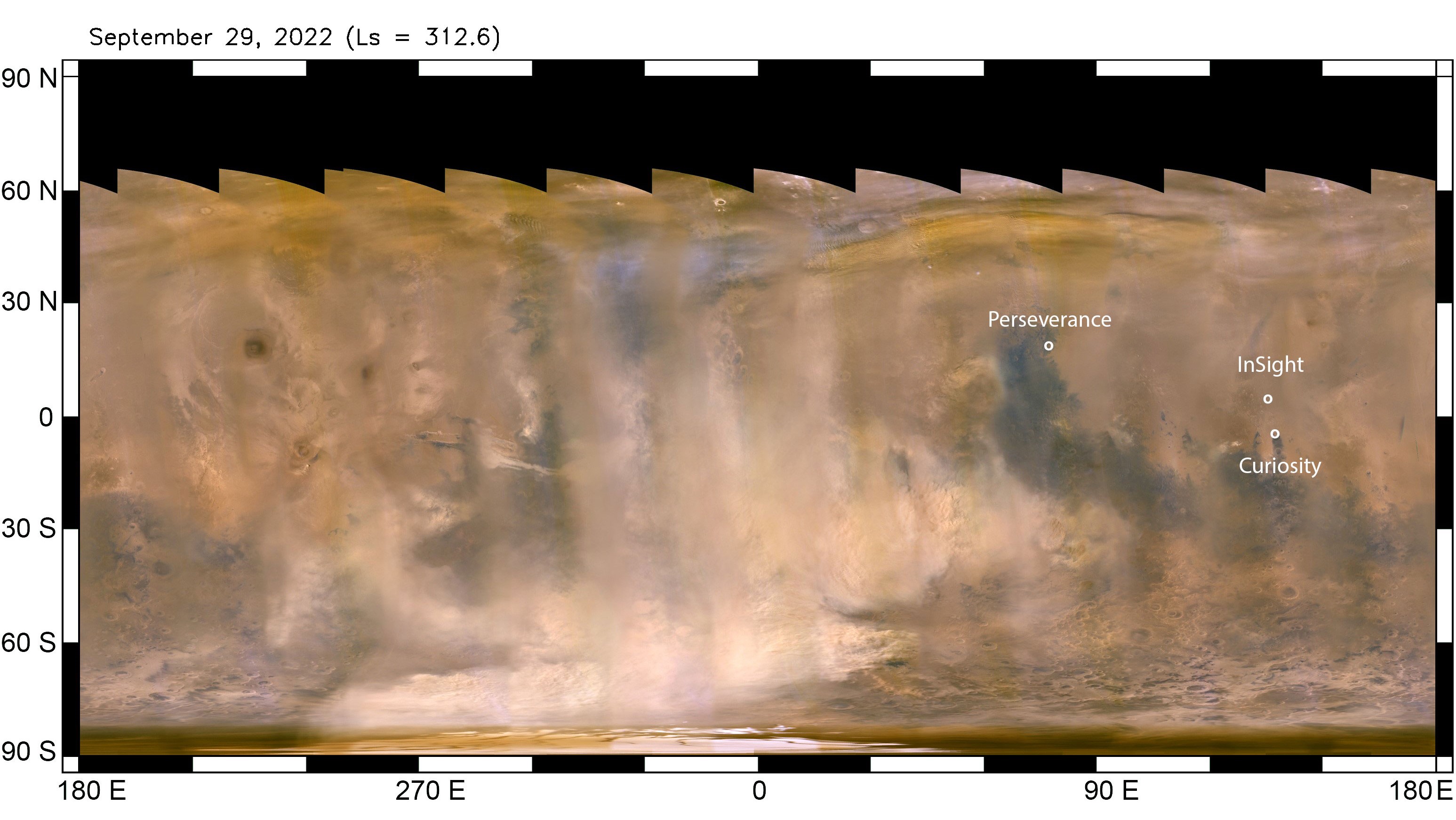Massive Mars dust storm threatens NASA's InSight lander

It's dark days for NASA's InSight mission.
NASA's InSight lander touched down in November 2018 to study the Red Planet's structure and seismic activity. But the lander relies on power gathered by its solar panels, and the notoriously dusty planet has dumped a thick layer of material on the panels, dramatically reducing the amount of power that the robot can generate. Scientists have acknowledged for months that the mission's end was near, and now, a continent-size dust storm is darkening the Martian skies, further impacting power production.
"We were at about the bottom rung of our ladder when it comes to power. Now we're on the ground floor," Chuck Scott, project manager for InSight at NASA's Jet Propulsion Laboratory in California, said in a statement. "If we can ride this out, we can keep operating into winter — but I'd worry about the next storm that comes along."
Related: NASA's Mars InSight lander snaps dusty 'final selfie' as power dwindles
InSight had been generating an average of 425 watt-hours per Martian day, or sol, but this week is managing just 275. The lander needs to average about 300 watt-hours per sol to keep the seismometer, communications and basic functions operational, Scott previously told Space.com.
Although estimates earlier this year suggested that the mission might end in late summer, a spate of quiet weather at the lander's location in Elysium Planitia added a few months to that timeline. But mission personnel have known all along that a big enough dust storm could be enough to end InSight.
Then, on Sept. 21, NASA's Mars Reconnaissance Orbiter (MRO) captured images of a large dust storm about 2,175 miles (3,500 kilometers) from the lander. For a while, power production remained steady, but by Monday (Oct. 3), the skies over InSight were darkening and the lander was feeling the storm's impact.
Get the Space.com Newsletter
Breaking space news, the latest updates on rocket launches, skywatching events and more!
InSight has turned off the lander's remaining operational instrument, its seismometer, for two weeks to save energy in hopes of weathering the storm, according to the statement.

Mission personnel had decided to run the seismometer for as long as possible rather than conserve energy to continue gathering science data; most recently, the instrument had been alternating operations and rest every 24 hours.
That decision also means that, unlike many spacecraft, NASA won't send a command to InSight to end its mission. Instead, when power finally runs out, the lander will simply fall silent.
There's a chance InSight may still pull through this particular storm. According to MRO observations, the dust storm's growth has slowed and its clouds aren't growing as quickly. However, even if this event quiets down, another storm will come sooner or later. Scientists had expected dust storm activity would pick up recently given the changing Martian seasons, and this is the third storm of the year, NASA said.
Email Meghan Bartels at mbartels@space.com or follow her on Twitter @meghanbartels. Follow us on Twitter @Spacedotcom and on Facebook.
Join our Space Forums to keep talking space on the latest missions, night sky and more! And if you have a news tip, correction or comment, let us know at: community@space.com.

Meghan is a senior writer at Space.com and has more than five years' experience as a science journalist based in New York City. She joined Space.com in July 2018, with previous writing published in outlets including Newsweek and Audubon. Meghan earned an MA in science journalism from New York University and a BA in classics from Georgetown University, and in her free time she enjoys reading and visiting museums. Follow her on Twitter at @meghanbartels.









